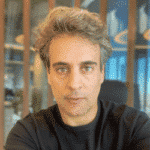Currently, there are approximately 7,000 rare diseases in the world. These diseases are usually chronic and degenerative, in most cases severe and even disabling. For these reasons, patients often suffer great frustration, leading to social isolation.
Despite being called “rare,” between 3.5% and 5.9% of the global population suffers from a rare disease, with an estimated 30 million people suffering in the US alone.
These patients are dissatisfied with the healthcare services received, the high cost of these services, the need to travel to visit a hospital or medical center, and even the discrimination they suffer for their condition in some cases.
It is for these reasons that the health sector has begun to rely on technology to take on the challenge of tackling rare diseases.
Technology can decrease diagnosis times in patients with rare diseases
In most cases, the seriousness of rare diseases increases due to a late diagnosis, so the disease continues to unfold and worsens.
One of the main problems is the need for more healthcare personnel experience or the lack of similar cases, which leads to late detection. It takes an average of 4-5 years to diagnose some of these cases, and sometimes can take up to a decade.
Technology provides new tools that can improve the diagnosis and treatment of these diseases.
About 80% of rare diseases are due to variations in hereditary material. Thanks to the advances in genetics, professionals have been able to determine the causes of many of these diseases and design specific tests for their diagnosis.
An example is the high-performance gene platforms, which can be used to discover new genes and new mutations in genes, as well as different phenotypes.
The fact that technology can guarantee, or at least allow, early diagnosis is essential in delaying the onset of symptoms or treating the disease from the start. Therefore, early detection is one of the keys to reducing the morbidity rates of these diseases.
Technology applied to the diagnosis and treatment of rare diseases
Almost 50% of all patients with rare diseases are dissatisfied with the healthcare services received. Part of this dissatisfaction stems from the need for constant monitoring by healthcare personnel.
Technology is not only the key to reducing monitoring times and offering a platform through which patients can communicate the symptoms, but to fully change the patient’s experience and improve their quality of life. Progress has been achieved in the following areas:
3D scans for diagnosis
A team of researchers from the University of Colorado, the University of Calgary, and the University of California have developed an innovative technology that uses 3D face imaging technology to speed up the diagnosis of rare diseases.
The team created a library of 3D face images of individuals of different ethnic groups and ages. The library is made up of records of 3,327 participants with 396 different genetic syndromes, 727 of their unaffected relatives, and another 3,003 unaffected individuals.
After storing the images in a database, the team trained a machine learning algorithm to help identify people suffering from a rare disease.
mRNA technology
This technology was used to develop the COVID-19 vaccine by Pfizer and Moderna.
Messenger RNA prepares cells and tells them which protein they must produce to fight infection. Most recently, the COVID-19 vaccine was developed using this technique. It has been used for years, though, to help fight against a series of diseases, such as Lyme disease.
This technology aims to rare disease transmitted by ticks by administering antigens to stop their feeding. Therefore, this vaccine would target antigens from tick saliva and prevent them from feeding on people.
CRISPR technology
Another of the therapies implemented to treat rare diseases is CRISPR technology. This gene-editing tool can treat different conditions, such as hereditary angioedema.
This genetic disease causes skin, mucous membranes, and digestive system swelling. The NTLA-2002 treatment was developed with this technology, which blocks the action of the gene responsible for this disease in the liver.
CRISPR technology alleviates the symptoms of the first six patients suffering from this disease who have received treatment.
Symptom recognition platforms
Another example of technology developed for early detection is platforms that list the disease symptoms to help people recognize them.
An example is the website early signs of SMA, developed by Novartis Gene Therapies, which seeks to help those likely to have SMA.
SMA is a genetic disease caused by the absence or mutation of the SMN1 gene. Patients diagnosed with this rare disease suffer from loss of motor neurons, which can affect vital functions.
The possibility of using these platforms to make an early diagnosis favors the assignment of a treatment that could save lives and even halt the course of the disease in children.
Technologies that save lives
What is most important about the technological advances described above, either to speed up the diagnosis and development times of new treatments for these diseases, is that these advances are changing the lives of many people and communities.
Digital tools have made us more capable of improving the experience of patients. A few examples include the following:
- Decentralized healthcare platforms with health professionals,
- Virtual “assistants” can answer the questions of patients or their relatives and even provide a preliminary and basic medical diagnosis that a health professional can later use, and
- Disease pattern recognition tools associated with the patient’s health data.
There is still much to achieve, but these tools are helping thousands of health professionals, and their patients receive a previously unimaginable healthcare service.
Globant’s Healthcare and Life Science Reinvention Studio proves the company’s commitment to developing tools for people with rare diseases aimed at helping them lead happier and fuller lives.





